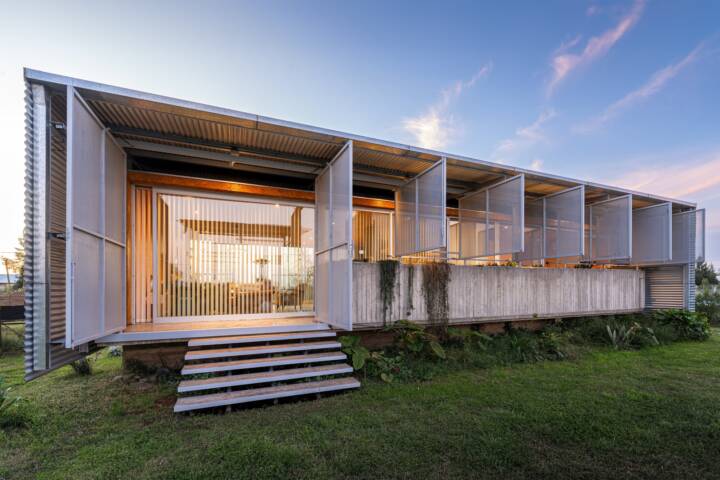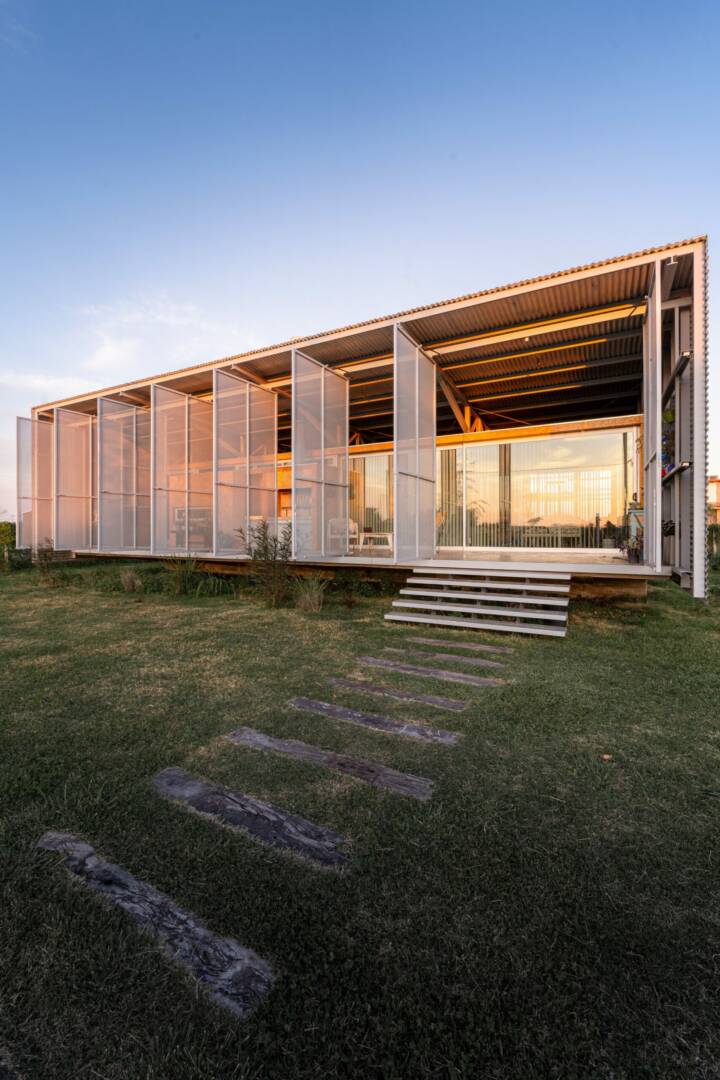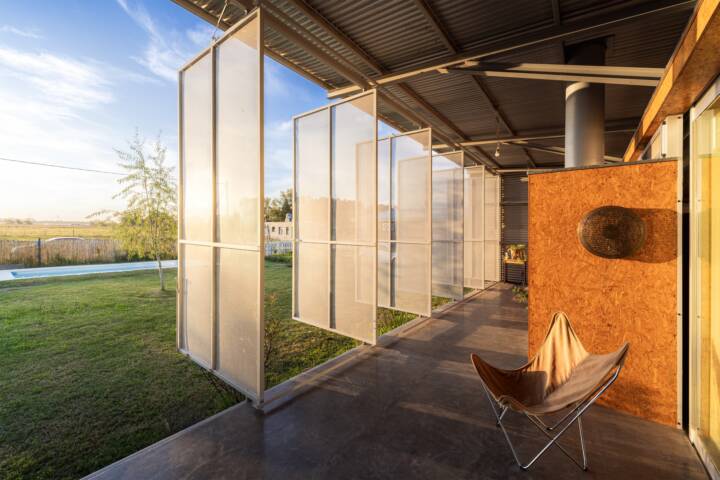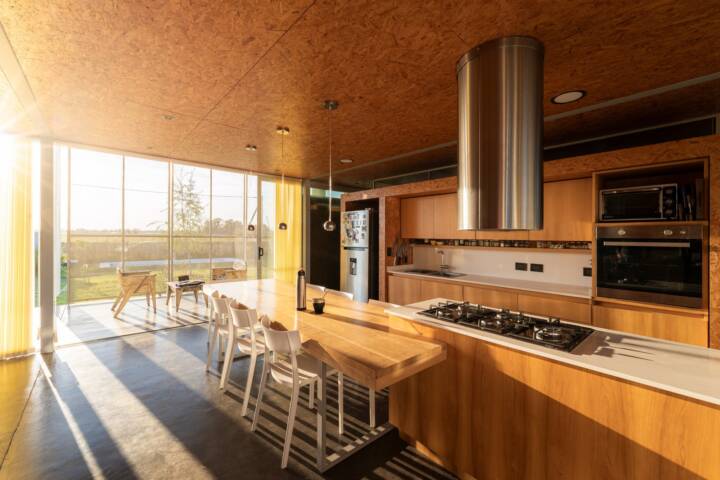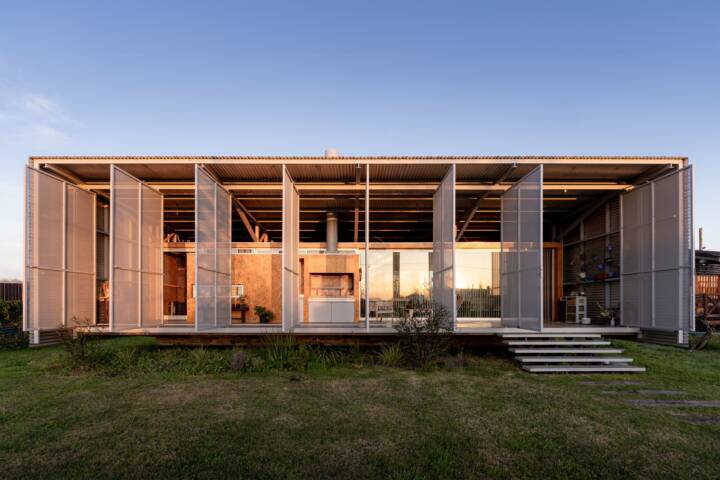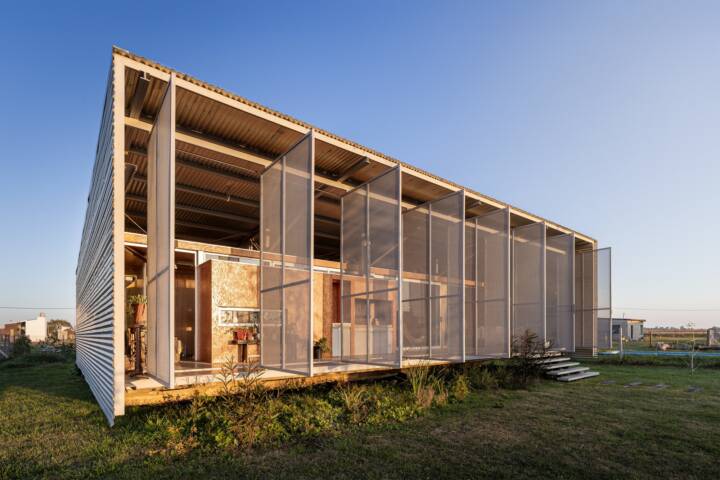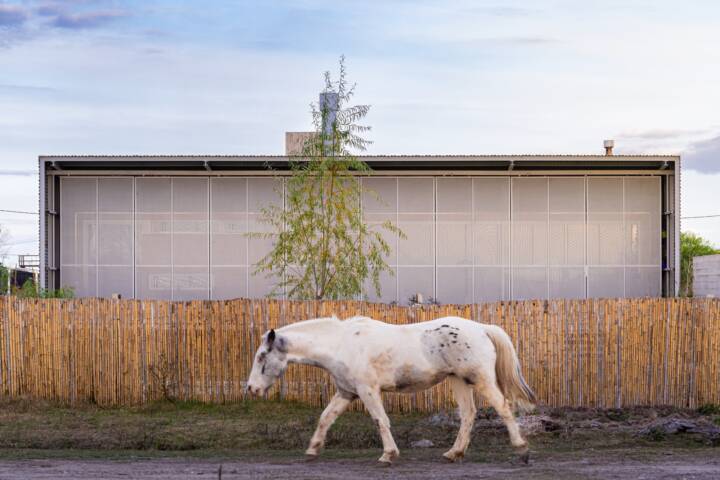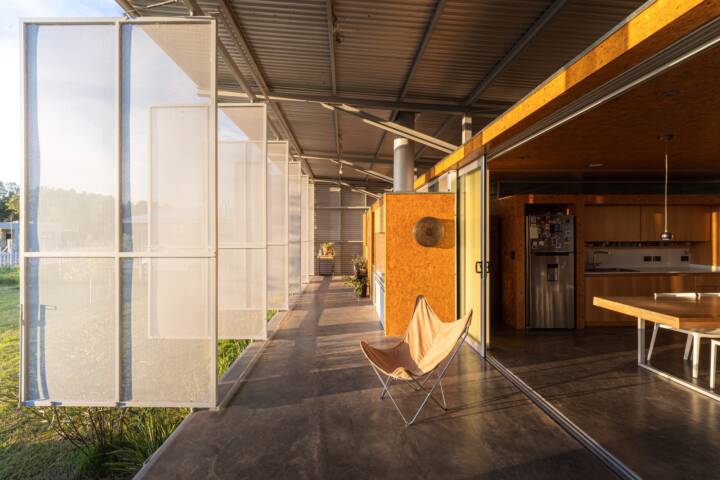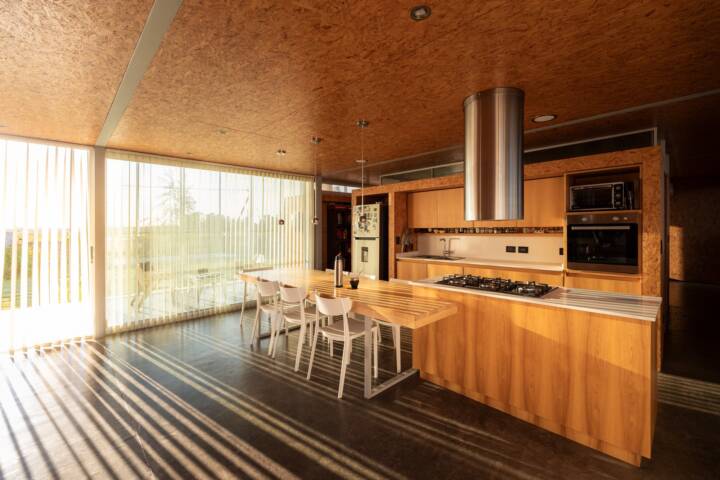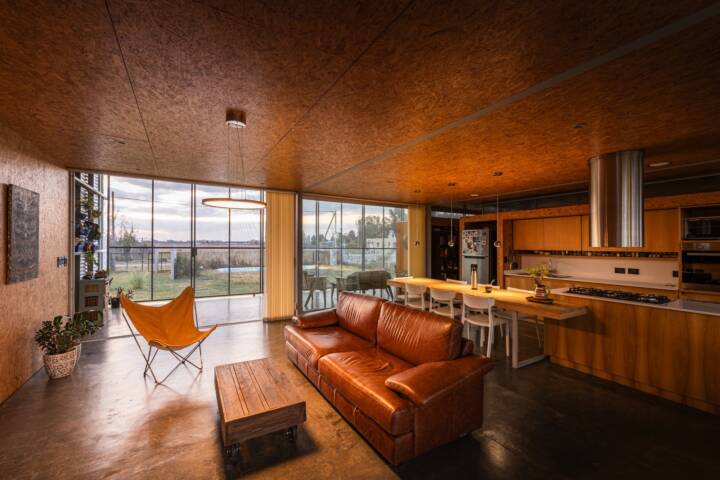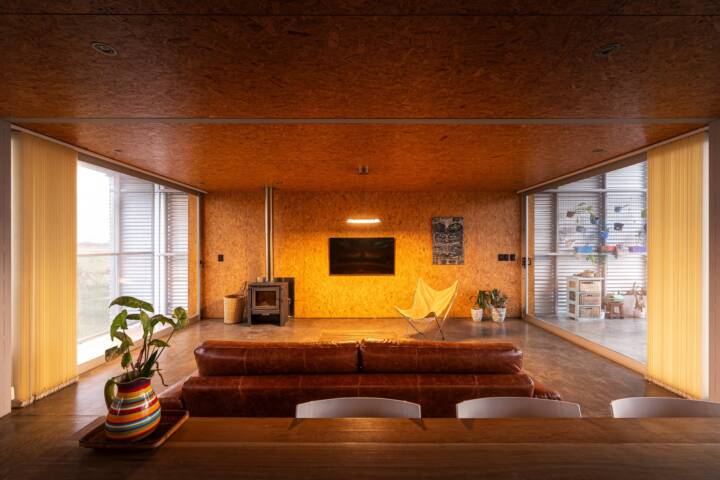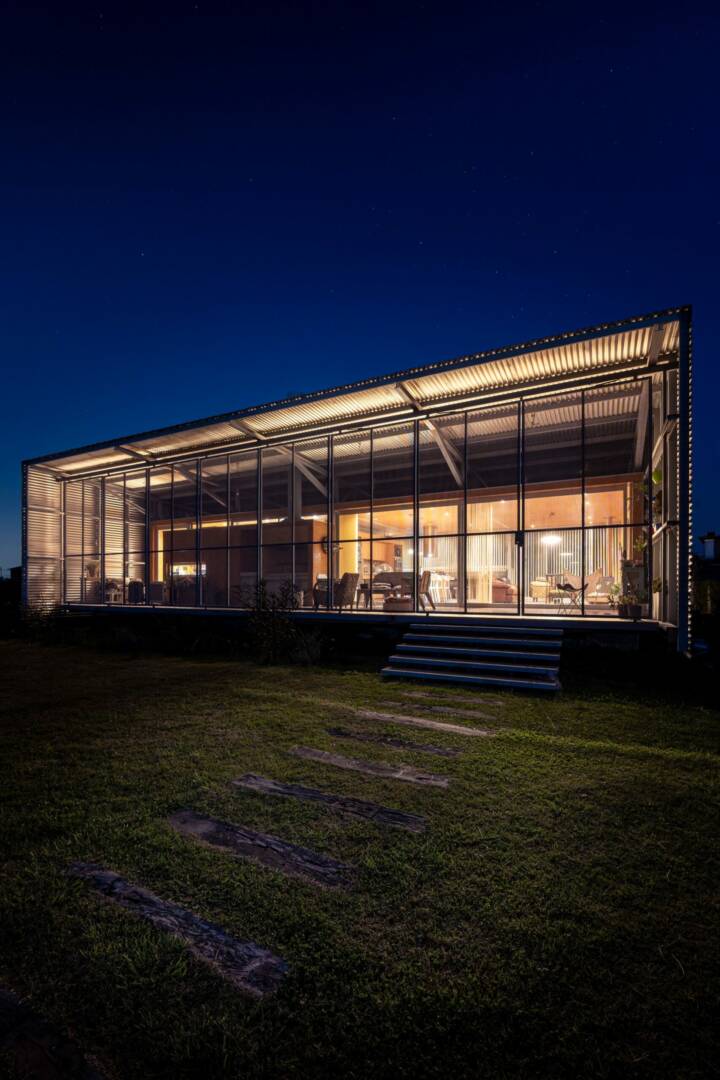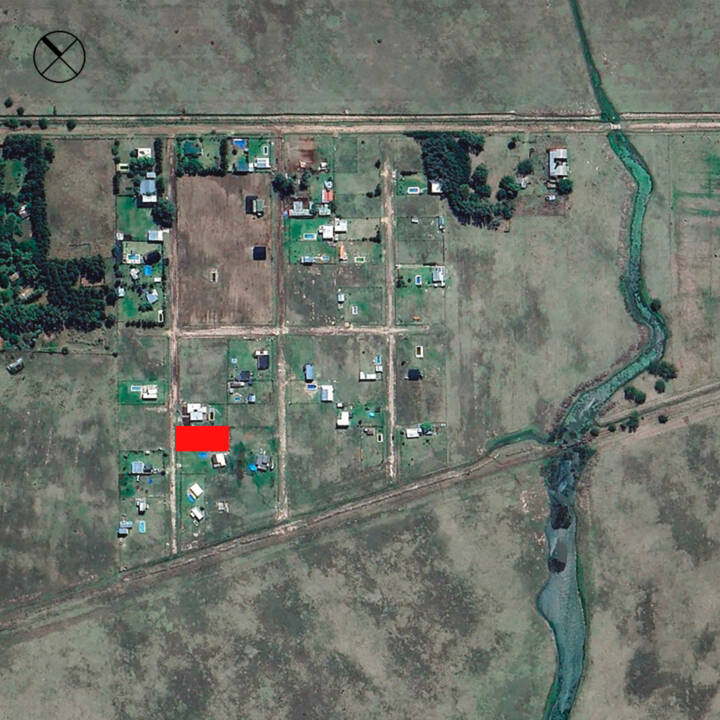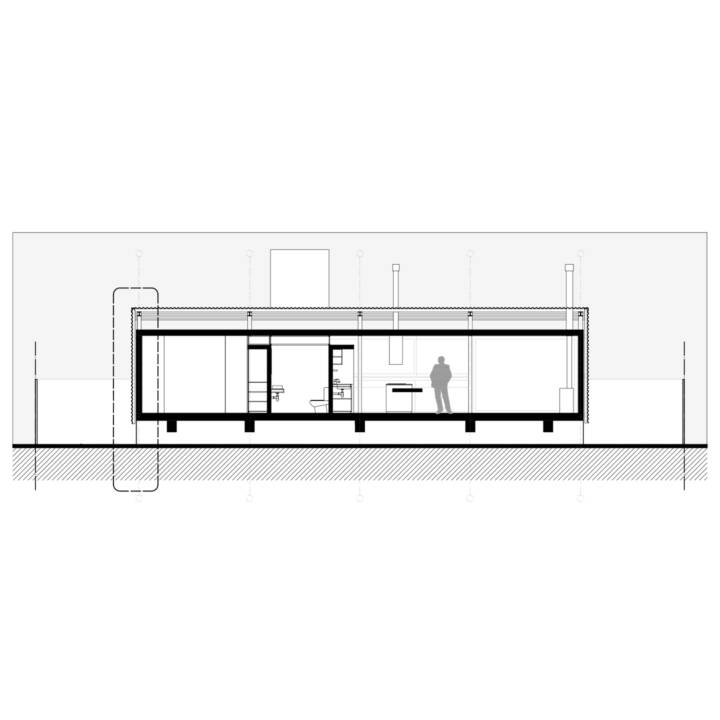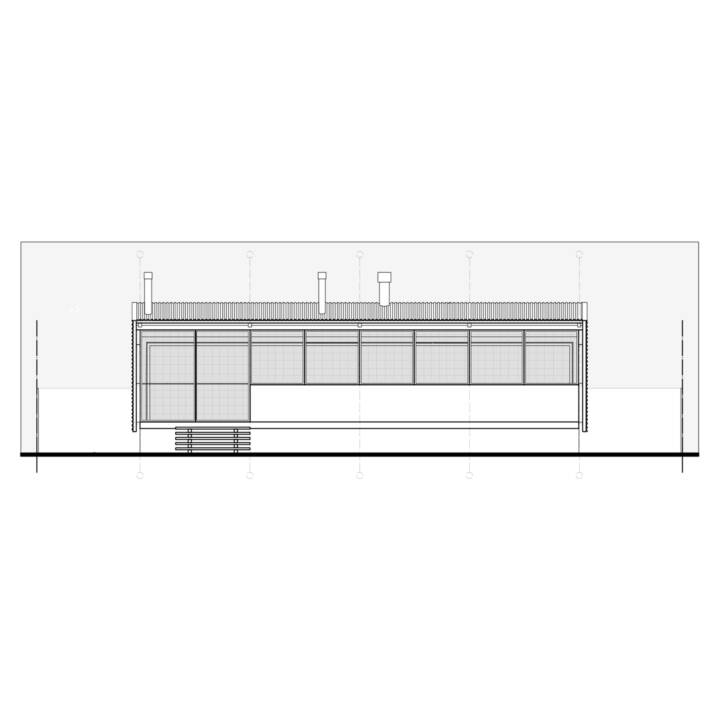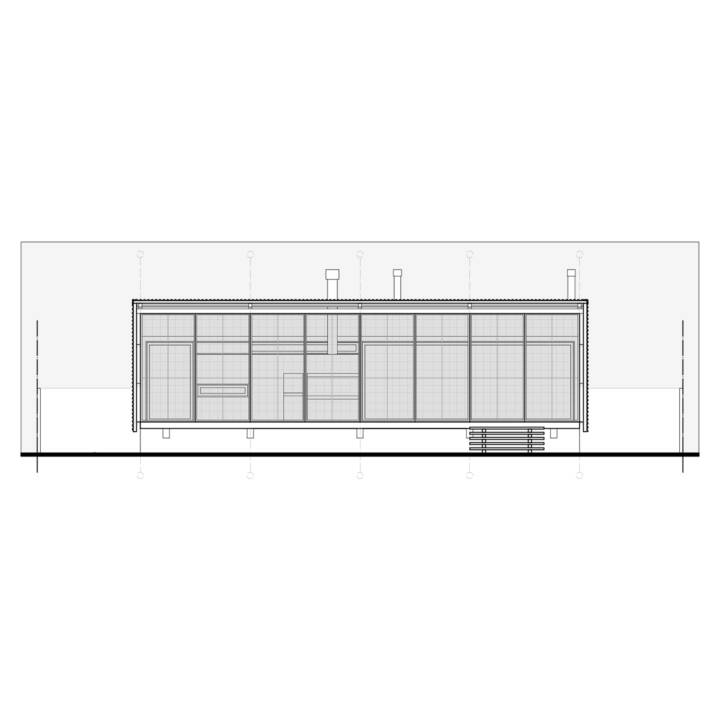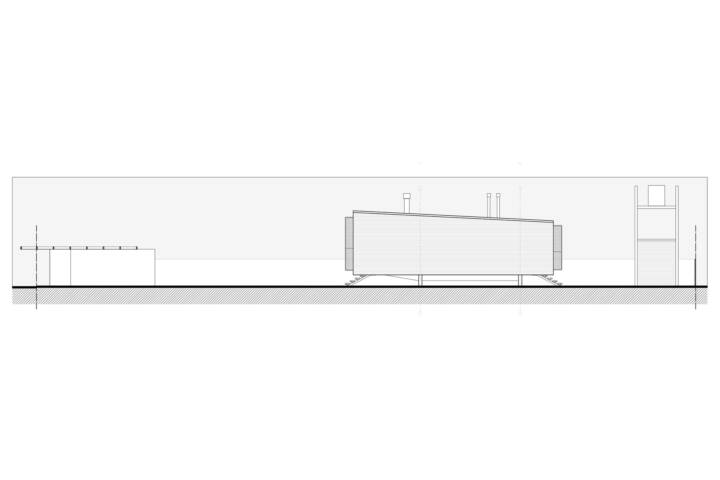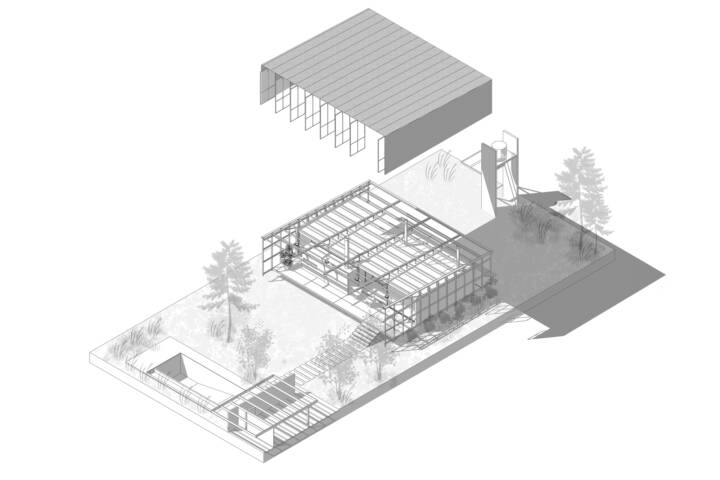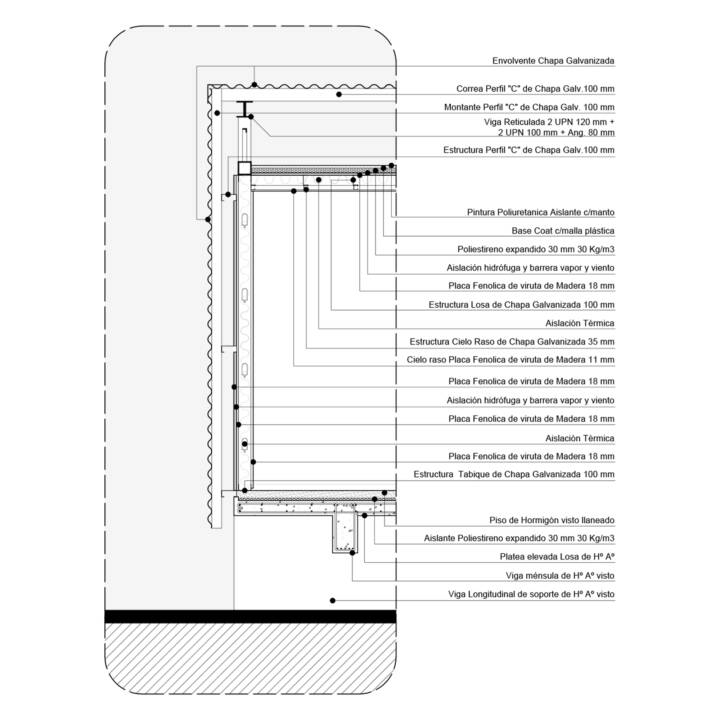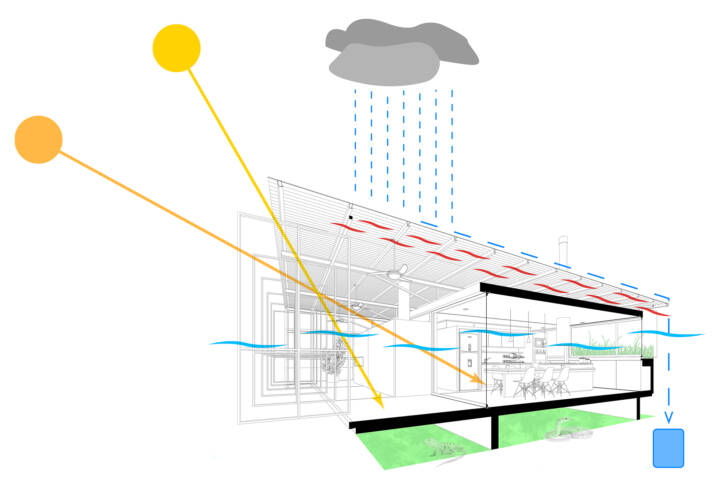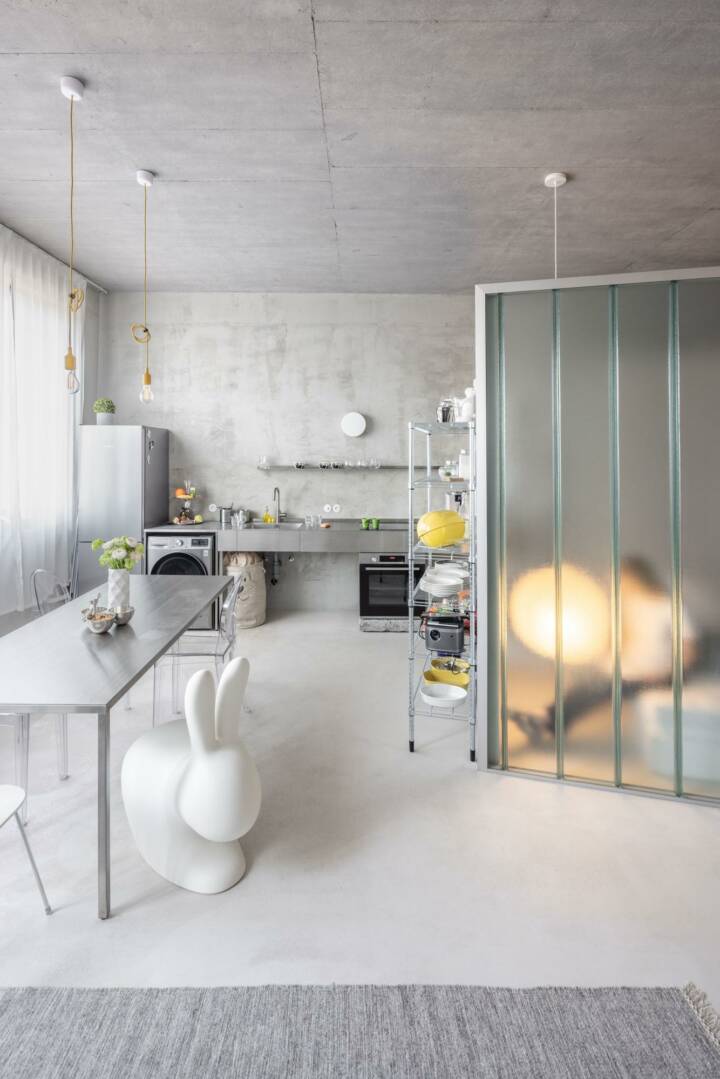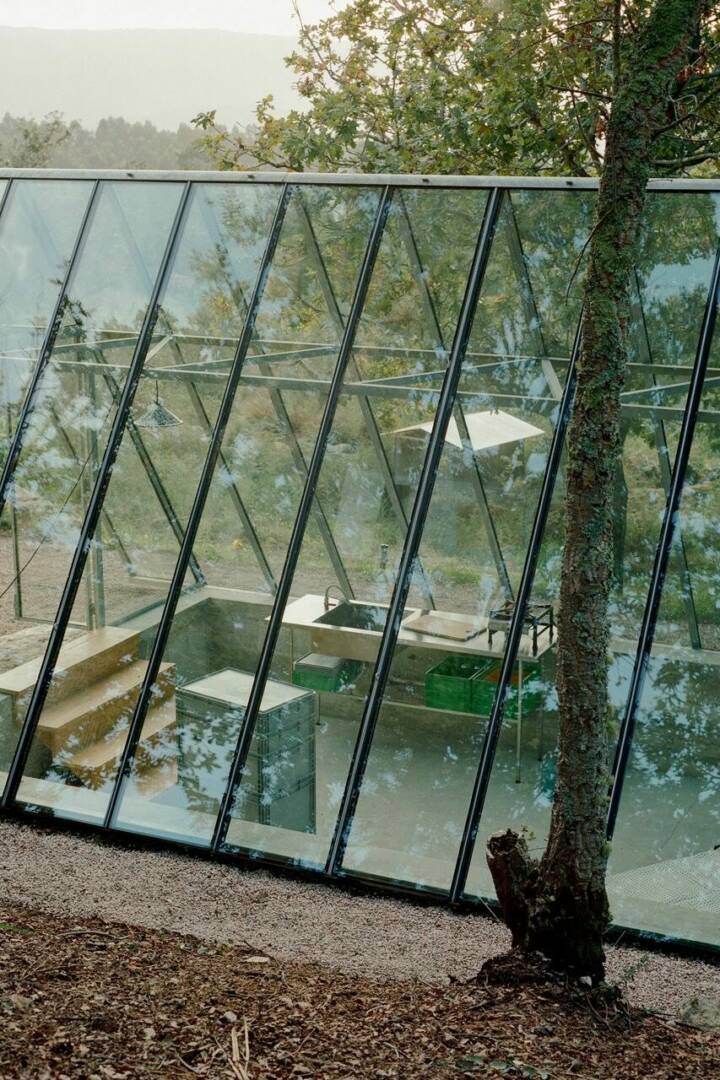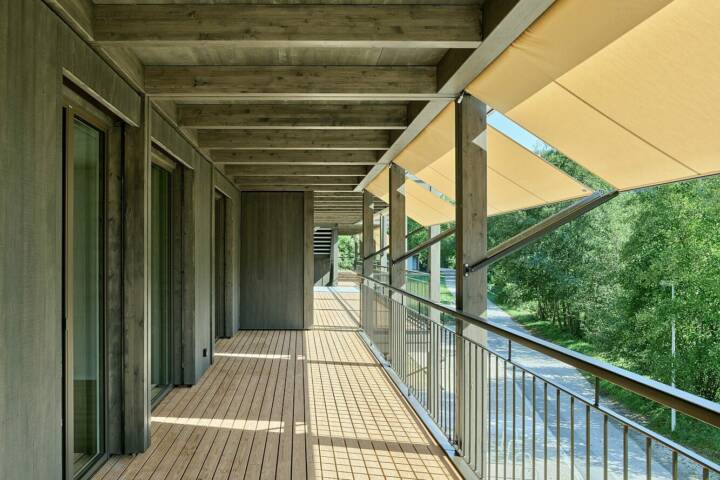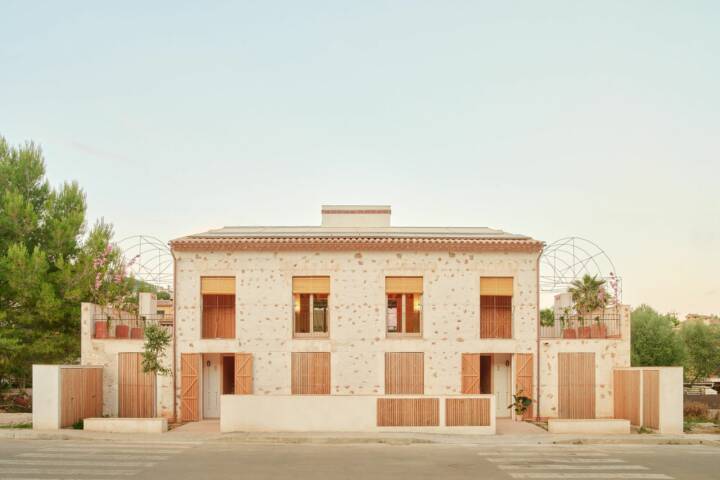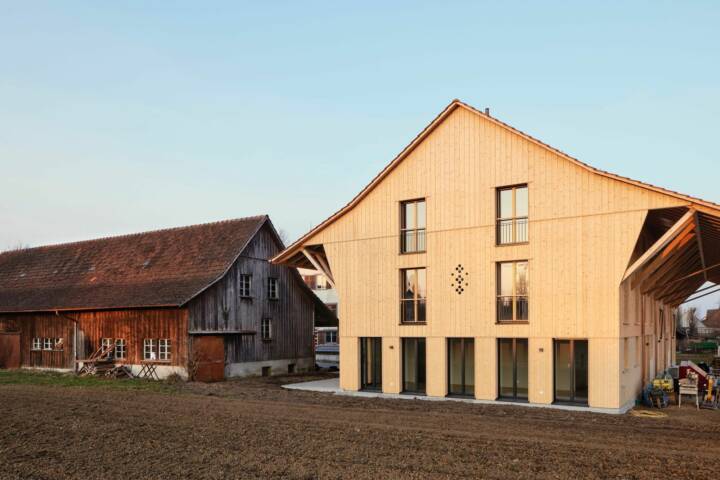Architects: Arquitecto Julián Ierace Arquitecto Sebastián Miranda Photography: Arquitecto Sebastián Miranda Construction Period: 2023 Location: Coronel Brandsen, Argentina
The house is placed in a rural cluster in Brandsen, Buenos Aires province, alongside the San Luis stream, in a typical environment of the pampas plain. It is a weekend residence for a couple seeking a simple, low-cost design and reduced surface.
Besides the project’s requirements, it is about an investigation and thinking about the ways of habiting a domestic space in a semi-rural context and the adequate technology to materialize it. Applying integrated solutions and being sensitive to the environment, understanding the dwelling like a system equilibrated with his surroundings.
The body of the house stands on a concrete platform, supported by two large beams at ground level, creating cantilevers that allow it to be suspended over the terrene and adapt to its humid characteristics, a product of the possible flood of the brook. This additionally raises the visuals towards the horizon.
Read MoreCloseIts regular and uniform level (a reinterpretation of the Farnsworth de Ludwig Mies van der Rohe house) contributes to the flexibility of use, producing an articulation between the social area and the private spaces through the humid areas. Its large glazed enclosures, which are concealed, enable continuous and direct expansion, increasing the social areas.
To reduce the use of resources, passive aspects like galleries, cross ventilation, regulation of solar incidence, adequate thermal insulation, and exploitation of natural light were added. Furthermore, active strategies were included, such as systems of rainwater collection for irrigation, biodigester for the sewage water, and a solar collector to heat the water, reducing the use of natural resources. Partition walls with phenolic sheets of wood shaving, derived from products made with recycled materials, contributed internally comfortable characteristics typical of rural cabins.
Implementing sustainability strategies, the zinc-clad envelope creates a barrier on the lateral walls and a sunshade effect on the cover through the roof extension, creating an air chamber that isolates the dwelling from the outside, decreasing the energy needed to condition it and its exposure to the open air.
The envelope complements a system of pivoting enclosures of a micro-perforated sheet, which regulates the incidence of sun rays and grants the visual entailment with the landscape, thereby providing security when the house is uninhabited. The application of raw concrete and natural wood in flooring and garden paths emphasizes the natural treatment of the composition.
In the volume of the dwelling, the combination of walls and phenolic partitions with the structure and metallic envelope, permeable for the most part, brings a visual effect of transparency and contrast. These construction solutions allowed for speed of execution, storage capacity in an area that is difficult to access, and reduction of future maintenance costs.
The environmental regeneration is currently in execution through the design of the exterior landscape with native plants, aspiring to restore the indigenous flora and its associated fauna, which have been affected by deforestation and urban growth.
Text provided by the architect.
